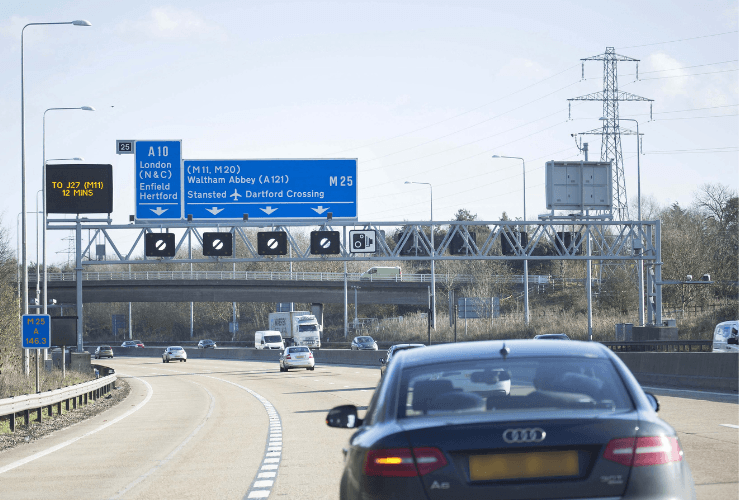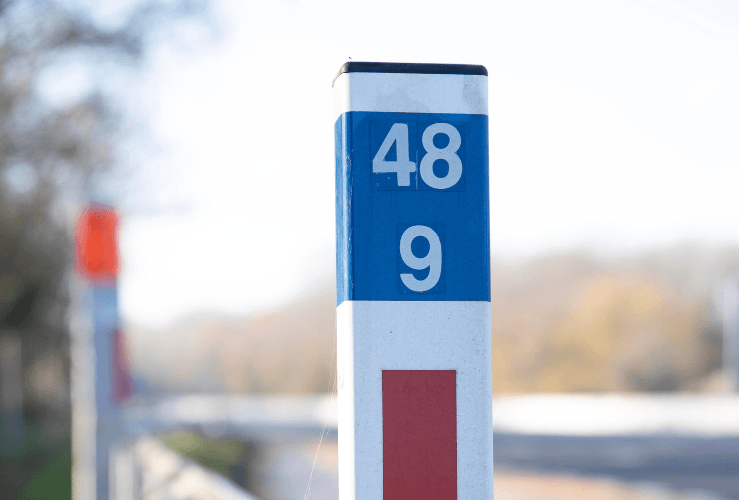If you've ever broken down, or needed an emergency service while on the road, a driver location sign may have helped assistance reach you.
Driver location signs contain information that pinpoint your location.
According to one survey, 76% of drivers do not know what driver location signs mean.
If you read on, you'll ensure you're not among them!
What do driver location signs look like?
Driver location signs are tall rectangles with a white border. They are coloured blue on motorways and green on A-roads.
They are positioned every 500 metres (550 yards).
 Credit: Picture courtesy of National Highways
Credit: Picture courtesy of National Highways
What do the letters and numbers mean on a driver location sign?
First line
The first line of a driver location sign is the name of the motorway or road - for example, M42.
Second line
On the second line is either an A or a B.
‘A’ means you are on the side of the road that is one or all of the following:
- Northbound
- Moving away from London
- The side on which the junction numbers increase
‘B’ means you are on the side of the road that is one or all of the following:
- Southbound
- Moving towards London
- The side on which the junction numbers decrease
What about the M25?
When it comes to London's famous ring road, if a sign reads ‘A’, it means you are travelling clockwise with junction numbers increasing.
What about letters J, K, L and M?
You may see these letters on slip roads. Which one depends on your direction and location.
Third line
This number denotes the distance in kilometres from the start of the road or motorway.
With the M25, this distance is measured clockwise from the Dartford Crossing.
 Credit: Picture courtesy of National Highways
Credit: Picture courtesy of National Highways
Using driver location signs
If you are experiencing mechanical problems while on the road, find somewhere safe to pull up - ideally a motorway service station or another location away from the traffic.
Note down the nearest driver location sign information and provide this to your breakdown recovery provider. It will make it much easier for them to locate you.
If you can’t see a driver location sign, don’t worry. You can use any other nearby features to identify your location.
And of course, if you have a smartphone with internet data you can use Google Maps or similar to determine where you are.
If you have a satnav this will also tell you your location.
Facts about driver location signs
- Driver location signs are larger versions of the smaller location identifiers. These bar-shaped markers feature similar location information and show the direction to the nearest emergency telephone.
- Driver location signs (much more prominent than the older markers) can be used by motorists who pass someone or something on the road that may need the attention of emergency or breakdown services: a broken-down motorist or a collision, for example.
- Before driver location signs were introduced, pinpointing the location of an incident was more difficult - especially when it came to which side of the road it was on.
- Driver location signs were introduced in 2003 and are found on English roads - but not those of Scotland, Wales or Northern Ireland.




